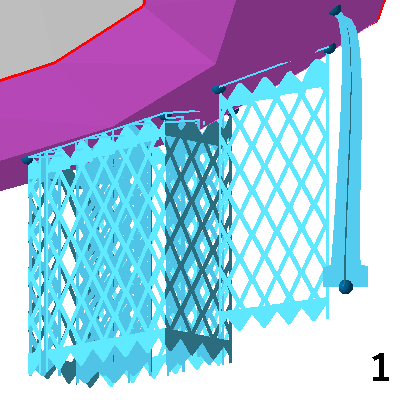Store and recall support action parameters during editing
Jump to:
- What is it?
- What are the key features and benefits?
- When are manual defaults used?
- Where do I find manual defaults?
- What are the limitations to watch out for?
What is it?
Manual defaults capture and store settings of supports so they can be recalled and applied later.
TopWhat are the key features and benefits?
- Manual defaults hold the values used when you create supports manually.
- A manual default can store the values of more than one support type at once.
- The generation parameters of already existing support entities can be changed instantly with the values stored in a manual default.
- Manual defaults let you apply new values to currently selected, existing supports individually. Supports that were not selected keep their previous values even when the individual supports where all generated by the same support action.
- You can duplicate and modify manual defaults, delete custom defaults you do not need anymore.
- You can export manual defaults, share, and import them.
- Machine workspaces can bring their own default manual defaults.
- Netfabb comes with three default sets of manual defaults, each storing example variants for all support types, bar, volume, and polyline.

The three default sets of manual defaults come with variants for each support type.
When are manual defaults used?
Manual defaults, in particular the currently selected one, are used automatically whenever you use any of the manual support creation controls,
 bar,
bar,
 polyline, or
polyline, or
 volume, available from the toolbar, or through the context menu of a cluster of triangles determined by the
critical and non-critical angles in the
Analysis tab in the context view.
volume, available from the toolbar, or through the context menu of a cluster of triangles determined by the
critical and non-critical angles in the
Analysis tab in the context view.
You can also apply the values stored in a manual default to individually selected supports that were generated earlier. In general, manual defaults are used in a "format painter" manner to capture the values used to generate a particular support entity (a single bar, polyline, or volume) to a different support element of the same type as the original element.
Manual defaults are used furthermore to initialize values for support actions newly added to a support script as and where possible.
Where do I find manual defaults?
You select and manage manual defaults in the context view of the support module, and there on the Edit tab.
TopWhat are the limitations to watch out for?
- The three default sets of manual defaults cannot be deleted or changed.
- A set of manual defaults cannot store more than one variation of a support type. For instance, if you try to capture two bar supports in the same set, each with different values, only one of them has its values stored and you cannot choose which one.